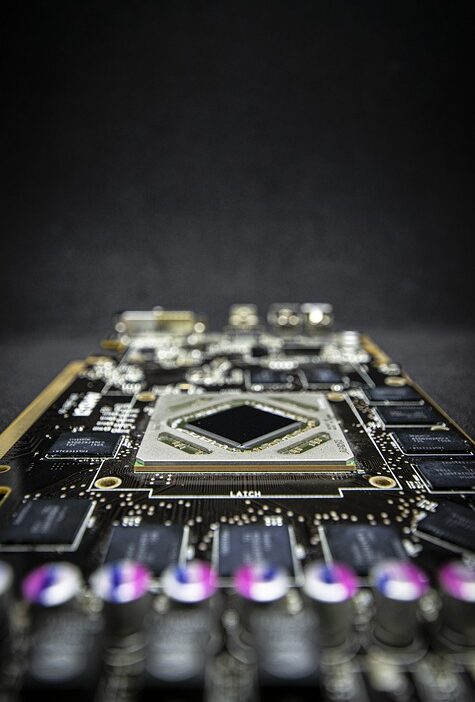The Rise of Ryzen: How AMD Dominated the Gaming Hardware Space
In the competitive landscape of gaming hardware, one name has emerged as a titan—AMD, particularly with its Ryzen processor line. The journey from relative obscurity to dominant force in the CPU market has been marked by innovation, strategic maneuvering, and a keen understanding of gamer needs. This article explores how AMD’s Ryzen series revolutionized the gaming hardware landscape and redefined industry standards.
The Landscape Before Ryzen
For many years, Intel held a stronghold in the CPU market, particularly in gaming. While AMD was known for its competitive pricing, it lagged behind in performance metrics, often viewed as the budget option. Gamers seeking the highest frame rates and smoother gameplay turned to Intel processors, leaving AMD struggling to gain traction.
The Turning Point: Introducing Ryzen
The launch of the Ryzen series in March 2017 was a pivotal moment for AMD. The Ryzen 7 1800X, the flagship processor at launch, marked a significant shift in AMD’s strategy. With its Zen architecture, Ryzen offered high core counts and multi-threading capabilities at prices that undercut Intel’s offerings. For the first time, gamers and content creators had a compelling reason to consider AMD, as Ryzen processors promised not just competitive performance but also exceptional value.
Technical Innovations
-
Zen Architecture: The introduction of the Zen microarchitecture was revolutionary. It provided substantial IPC (instructions per cycle) gains, enhancing overall efficiency. This translated into games benefiting from higher frame rates and responsive gameplay.
-
Multi-Core Performance: Ryzen processors often featured more cores and threads compared to their Intel counterparts at similar price points. Games are increasingly optimized for multi-threading, which allowed Ryzen CPUs to excel not just in gaming but also in multi-tasking and content creation.
- Overclocking Potential: Ryzen processors were designed with overclocking in mind. Many enthusiasts were drawn to the ability to push their CPUs beyond stock speeds, offering a powerful combination of performance and customization.
Strategic Market Positioning
AMD’s pricing strategy played a crucial role in the rise of Ryzen. By offering competitive pricing for performance, AMD attracted a diverse range of customers—from casual gamers to hardcore enthusiasts. This strategy not only garnered positive reception but also increased market share. Retailers began to promote AMD products more prominently, leading to increased visibility among consumers.
Ecosystem Development: AM4 Socket
The introduction of the AM4 socket for Ryzen CPUs allowed for better motherboard compatibility and upgrades. This singular socket approach meant that consumers could benefit from future generations of Ryzen processors without needing to replace their entire setup. As a result, gamers felt more confident investing in AMD hardware, knowing it would remain relevant for years.
The Impact on Gaming Performance
As Ryzen gained popularity, the gaming community began to see tangible benefits. Not only did AMD processors perform well in gaming scenarios, but they also excelled in content creation tasks, making them attractive to streamers and content creators. With titles becoming more demanding in terms of CPU performance and multi-threading support, Ryzen’s prowess shone through.
Ryzen 5000 Series: Further Dominance
The release of the Ryzen 5000 series in late 2020 reinforced AMD’s position as a market leader. Based on the Zen 3 architecture, these processors brought home significant performance improvements across the board, particularly in single-core tasks—something that had long been a weakness for Ryzen. The Ryzen 9 5900X, for instance, received accolades for both gaming and productivity, establishing AMD’s supremacy in both sectors.
Competition and Response
While AMD surged ahead, Intel did not remain stagnant. The competition pushed AMD to innovate consistently, leading to rapid advancements in technology. AMD’s commitment to enhancing its product offerings has kept both companies on their toes, resulting in a cycle of innovation that benefits consumers.
Future Outlook
As the gaming community continues to evolve, AMD’s future looks promising. With ongoing developments in architecture and technology—including advancements in AI integration, energy efficiency, and even performance enhancements tailored for emerging markets like gaming laptops—AMD is well-positioned to maintain its technological edge.
Conclusion
The rise of Ryzen symbolizes a remarkable turnaround for AMD in the gaming hardware space. Through innovative technology, strategic pricing, and a keen grasp of market demands, AMD not only challenged the status quo but also redefined it. As gamers continue to look for the best performance-per-dollar, AMD’s Ryzen series remains a testament to the power of innovation and a commitment to excellence in the realm of gaming hardware. The future remains bright, and it will be exciting to see how the rivalry between AMD and Intel evolves in the coming years.



